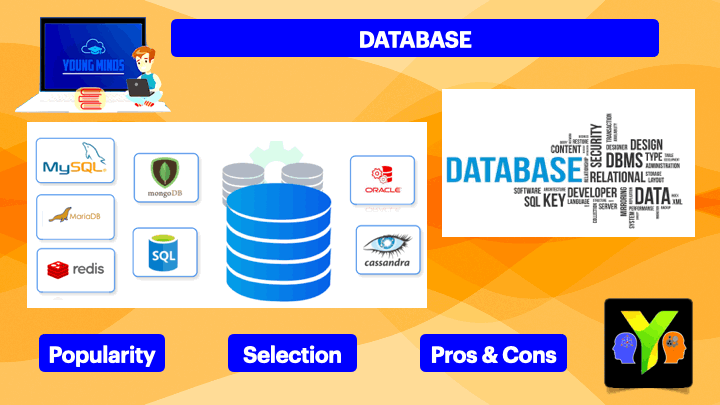Beginner’s Guide on Database [Part I]
Databases are important because they provide a way to store, organize, and access large amounts of structured data efficiently.

What is Database?
A database is a collection of organized data stored and accessed electronically. Databases are used to store, manage, and retrieve data in an efficient and organized manner.
Types of Databases:
There are several types of databases, including:
- Relational databases (RDBMS): These are the most common type of databases and use tables with rows and columns to store data. Examples include MySQL, Oracle, and Microsoft SQL Server.
- NoSQL databases: These databases are designed to handle large amounts of unstructured data, such as text, images, or videos. Examples include MongoDB, Cassandra, and CouchDB.
- Graph databases: These databases are designed to handle complex relationships between data, such as social networks. Examples include Neo4j and Amazon Neptune.
- Key-value databases: These databases store data as a collection of key-value pairs, making them fast and efficient for certain types of data access. Examples include Redis and Riak.
- Time-series databases: These databases are optimized for storing and retrieving time-stamped data, such as sensor data or financial data. Examples include InfluxDB and TimescaleDB.
- The suitability of a particular database for a business depends on several factors, such as the volume and complexity of data, the types of data being stored, and the required performance. For example, relational databases are well-suited for businesses with structured data and complex relationships between data, while NoSQL databases are better suited for businesses with large amounts of unstructured data.
Popularity:
The popularity of different databases varies based on several factors, such as the type of business, the size of the organization, and the complexity of the data being stored. Relational databases remain the most popular type of database, but NoSQL databases are gaining popularity due to their ability to handle large amounts of unstructured data.
Selection:
When selecting a database, it is important to consider the specific requirements of your business, such as the volume and complexity of data, the types of data being stored, and the required performance. It is also important to consider the scalability and reliability of the database, as well as the availability of support and resources for the technology.
Pros and cons of different databases also vary. For example, relational databases offer a high degree of consistency and data integrity, but can be less flexible than NoSQL databases. NoSQL databases offer greater scalability and flexibility, but can have lower levels of consistency and data integrity.
Some of the key benefits of using a database include:
- Data Management: Databases provide a centralized location to store data, making it easier to manage and retrieve information when needed.
- Data Integrity and Security: Databases offer a range of security features and tools to ensure that data is protected and stored in a way that prevents corruption or loss.
- Scalability: Databases are designed to handle large amounts of data and can be easily scaled to accommodate growth as needed.
- Improved Data Access: Databases allow multiple users to access the same data simultaneously, improving collaboration and decision-making.
- Data Backup and Recovery: Databases provide tools for backing up data and recovering it in the event of a disaster, ensuring that critical information is not lost.
Overall, databases play a crucial role in many organizations by providing a reliable and efficient way to store and access data. Ultimately, the choice of a database will depend on the specific needs of your business and the trade-offs that you are willing to make in terms of performance, scalability, and data integrity.









